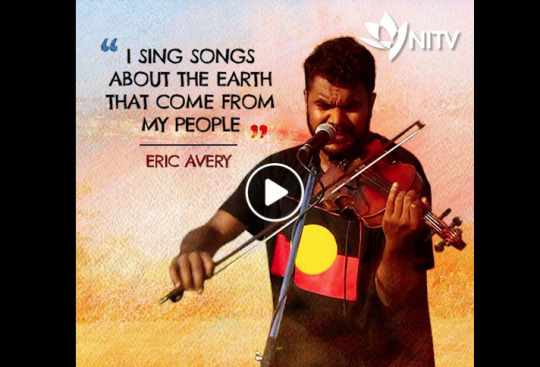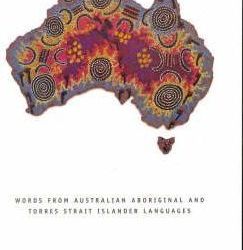#Wayilwan
Explore tagged Tumblr posts
Text
"In an open-air courtroom set up in a nature reserve in Western NSW, a four-nation clan has secured one of the largest native title claims in the region's history.
Far from the four walls and formalities of a federal courtroom, Justice Melissa Perry delivered her determination at Newey Reserve in Cobar on Wednesday, recognising the native title rights of the Ngemba, Ngiyampaa, Wangaaypuwan and Wayilwan peoples.
The decision marks the successful end of a 12-year legal battle that began in 2012.
The claim covers more than 95,000 square kilometres of land and water from the Barwon River in the north, to the Lachlan River in the south, the Castlereagh River in the east and Ivanhoe to the west.
It recognises native title rights including the right to hunt, fish and gather resources, the right to access and camp on land and right to protect places of cultural and spiritual importance.
A legacy for future custodians
Aunty Elaine Ohlsen, a Ngiyampaa Elder from Cobar and one of the original applicants, said the decision brought her "mixed emotions".
"I just persevered," she said.
"We've been through a lot of trials and tribulations to get here, but I'm someone who won't give up fighting for our people."
"These sorts of things need to happen all the time, because we need to know who we are and where we come from and where we are in this country."
Aunty Elaine hopes the determination will inspire future generations to continue their ancestors' legacy.
"Hopefully, this will encourage them to stay connected to their country, heritage, and culture, and to carry on the hard work we've done," she said.
Vision for the future
Wangaaypuwan man and claim applicant John Shipp recently camped on country with four generations of his family.
He said the recognition of native title meant they could continue to do so without fear of being moved on.
"It's just those little things that give us our connection back to our land, our heritage, our culture," he said.
The native title holders have now formed the Ngemba, Ngiyampaa, Wangaaypuwan Wayilwan Aboriginal Corporation (NNWW Corporation) to manage their rights.
As a director of the NNWW Corporation, Mr Shipp sees the determination as the beginning of a new chapter...
As for Mr Shipp's message to other Indigenous groups fighting for recognition?
"Keep going — it's getting better, it's getting shorter, it's happening, just keep going," he said."
-via ABC News Australia, August 14, 2024
#indigenous#indigineous people#australia#new south wales#land back#indigenous rights#decolonization#first nations#aboriginal#Ngemba#Ngiyampaa#Wangaaypuwan#Wayilwan#good news#hope
1K notes
·
View notes
Photo

Endangered Languages Challenge: Ngiyampaa
Name: Ngiyampaa also Ngiyambaa; Ngiamba; Ngaiamba; Nyamba; Ngiumba; Gaiamba; Ngemba; Ngeumba (Parrintyi by Paakantyi neighbours)
Genealogical Affiliation: Pama-Nyungan
Main Dialects: Wanggay (’no’) or Wanggaybuwan - spoken in the south
Wayil or Wayilwan - spoken in the north
Location: Central New South Wales, Australia. Bourke; Cobar; Nyngan; Ivanhoe; Willandra Creek; Bogan RIver.

Number of Speakers: The National Indigenous Languages Survey 2005 Report estimated 2 speakers of Ngiyampaa. These are low as most Aboriginal people do not like to give information freely because of unethical practices by anthropologists and linguists in the past.
Why is the language endangered? Step 2 of Process of Colonisation as outlined by Prof Virgilio Enriques: Destruction/Eradication. The forced removal from families, and the dispossession of many Ngiyampaa people contributed greatly to the destruction of the Ngiyampaa language. Many families were rounded up from areas around Cobar, Hillston, and Ivanhoe, and driven by the truckloads to Missions in Victoria (Yelta) and Menindee. There was widespread destruction of kinship links, and ties to Country that exacerbated the disintegration of the language. This was a targeted effort as part of Australian government policies of assimilation and cultural genocide of Indigenous populations.
Speaker Group:
Artwork of Mullian (wedge-tailed eagle) by Millmullian the Artist
Eric Avery is a Ngiyampaa violinist and Language Knowledge Holder

https://www.facebook.com/NITVAustralia/videos/367590474067450/
The Kelly/Pappin family are spokespeople for the Ngiyampaa people in cultural and linguistic conservation, as well as Native Title and Land Rights

Vitality & transmission: According to AUSTLANG, Ngiyampaa is “no longer fully spoken” (endangerment grade 0).
Media/Literature/Instruction: Joining The Dreaming Aboriginal Corporation at Broken Hill is developing language kits with posters, workbooks and DVDs (2007).

(My great-grandfather Dave Harris is singing and telling stories in Ngiyampaa on this cassette recording)
Word List in the Macquarie Aboriginal Words Dictionary

References:
Donaldson, Tamsin. 1978. Interim dictionary of Ngiyambaa of the Wangaaybuwan.
Donaldson, Tamsin. 1980. Ngiyambaa: the language of the Wangaaybuwan. Cambridge: Cambridge University Press.
#endangeredlanguageschallenge#endangered-languages#ngiyampaa#indigenous languages#aboriginal languages
67 notes
·
View notes
Photo

Our Word of the week is CobarAccording to Boxes 4-5: Survey... http://ift.tt/2mQ1KMs
Our Word of the week is Cobar
According to Boxes 4-5: Survey forms and correspondence received by the Royal Anthropological Society of Australasia regarding Aboriginal place names, 1899-1903, 1921-1926 Cobar means “Red clay”. This appears to be in Ngiyampaa, Wayilwan or Wangaaypuwan language.
If you want to get involved, you can help us by transcribing our diaries, letters, manuscripts and records. Click here to find out more.
It is important to note that these records were written in most cases about Aboriginal languages by non - Aboriginal people. For this reason, the written words may not accurately reflect the ways in which an oral language was spoken and transmitted.
0 notes
Photo

Our Word of the week is Terrabella.The word was recorded in the... http://ift.tt/2nnWinG
Our Word of the week is Terrabella.
The word was recorded in the region of Nyngan New South Wales.
According to Boxes 4-5: Survey forms and correspondence received by the Royal Anthropological Society of Australasia regarding Aboriginal place names, 1899-1903, 1921-1926 Terrabella means “Heap of rocks”. T
The letter sent for this collection sheet was from the Surveyor in Dubbo, who had been collecting names in this region. Searching Aboriginal langauge groups in this area, the word could be associated either with the Ngiyampaa or Wayilwan language.
We would love to hear more from communities if you know more about the words in the list!
If you want to get involved, you can help us by transcribing our diaries, letters, manuscripts and records. Click here to find out more.
It is important to note that these records were written in most cases about Aboriginal languages by non - Aboriginal people. For this reason, the written words may not accurately reflect the ways in which an oral language was spoken and transmitted.
0 notes